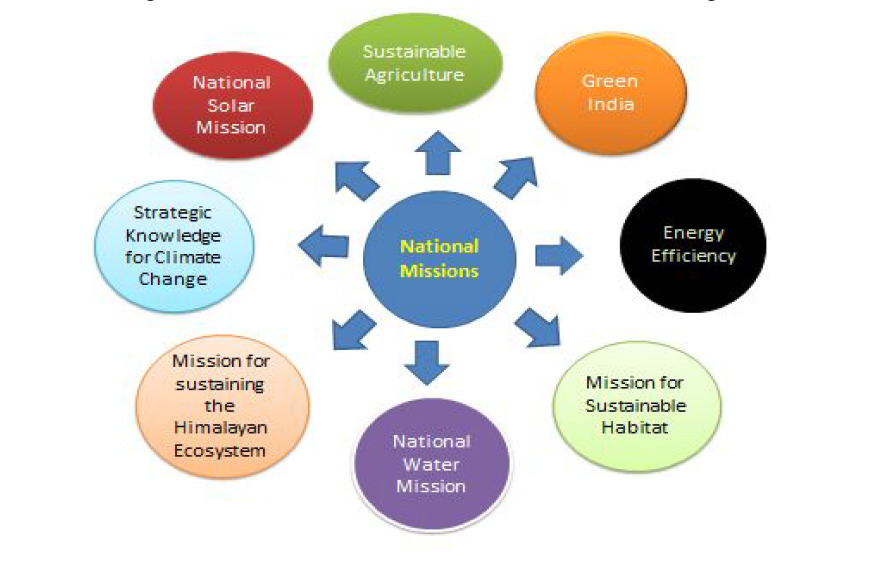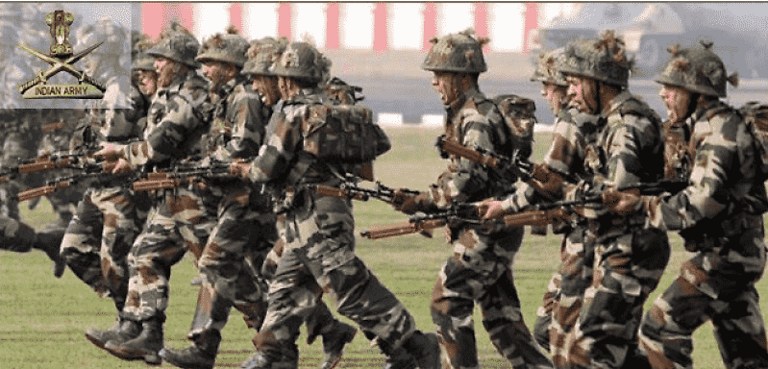
09 Feb Daily Current Affairs 9 February 2021
Universal Health Care
Statistics:
- Acute shortage of hospital beds:- A ratio 0.5 per 1000 population in India in comparison to 2.3 for China, 2.6 for Brazil and 3.2 for the US
- Doctors ratio:- 0.7 per 1000 population in comparison China and OECD is at 1.9 and 3.2
- Only 24 percent of the population that has medical insurance includes (both private and public sector).
- the public sector accounts for only about 20 percent of the total healthcare expenditure.
- India spends 1.5% of GDP, as compared to other BRICS countries (Brazil: 3.8 percent, China: 3.1 percent, Russia: 3.7 percent, South Africa: 4.2 percent)
- out of pocket expenditure is 94 percent, one of the highest in the world.
- To meet the WHO standards of 1 bed per 1000 population, Indian needs an investment of INR 1,62,500 crores.
National Health Policy 2017
- Increase in Life Expectancy at birth from 67.5 to 70 by 2025.
- To reduce infant mortality rate (IMR) to 28 by 2019.
- To Increase utilization of public health facilities by 50% by 2025.
- Meet the need of family planning above 90% at the national and sub-national level by 2025.
- To Increase public health expenditure by Government from the existing 1.15 percent to 2.5 percent of GDP by 2025.
- Establish primary and secondary care facilities as per norms in high priority districts (population as well as time to reach norms) by 2025.
- An electronic database at district-level which will provide information on health system components by 2020.
- Strengthen the health surveillance system + establish registries for diseases of public health importance by 2020.
- To Establish integrated health information architecture + Health Information Exchanges + National Health Information Network by 2025.
Why Universal Health right is needed:
- Seeing India’s health profile and central government commitment towards an increase in the expenditure demand it.
- Health transforms humans into productive human capital.
- It will decrease the burden on the government in the long term.
- It will help in increasing the growth rate thereby reaping the demographic dividend.
- To provide social Justice.
- Health is a public good so an increase in government spending and right-based approach is necessary.
Major Issues in the Indian health system:
- Insurance penetration and density is very less.
- Crumbling health infrastructure e.g. lack of human resource capital, physical infrastructure, very less public expenditure, etc
- The issue in the coordination of state and center.
- Malpractices in the private sector.
- Antimicrobial resistance.
- Consumption of medicine without the prescription of a physician.
- Out of pocket expenditure is very high.
- More focus on curative care
How to resolve:
- Focus on preventive approach.
- People must be made aware of how to solve obesity, depression, underweight, overweight issues.
- Society should make advancements such as walking and promotion of physical activities.
- Increase in the public expenditure as according to the national health policy.
- Increase in human resources and advancement in physical infrastructure.
- Focus on primary health care rather than tertiary care.
Swarn Rajput
Green Budgeting
Context: A Budget not for the environment on several significant items relating to the environment, allocations have remained stagnant or fallen. Budget allocation to Moef&cc has decreased in the budget.
Definition of green budget :
It means using the tools of budgetary policy-making to achieve environmental and climate goals such as INDC or renewable energy targets etc.
It also includes evaluating the environmental impacts of budgetary and fiscal policies and assessing their coherence towards the delivery of national and international commitments.
- Government India’s initiative to achieve:
- The 2019 Budget was a green Budget.
- National Coastal Mission.
- National Mission for Green India.
- Project Tiger.
- Integrated Coastal Zone Management Project.
- Central Pollution Control Board (CPCB) is also known as the central pollution watchdog.
- Project Elephant.
Criticism of this year Budget:
- The ‘Deep Ocean’ allocation is intriguing
- Budget allocation to Moef&cc has decreased in the budget.

Swarn Rajput
Law: Issue Of Remission
Context:
- Recently, TN Governor Banwarilal Purohit has decided that only the President can decide the issue of granting remission to the convicts in the Rajiv Gandhi assassination case.
- The matter is pending since 2018 and now, finally, the baton has been passed to the Office of the President of India in this matter.
- The Tamil Nadu Cabinet had already recommended to the Governor to remit Perarivalan’s sentence and release him in 2018 but the Governor is yet to take a call on the same.
- The Supreme Court of India had on many occasions expressed its displeasure over the indecisiveness of the TN Governor.
Issue:
Perarivalan(one of the convicts in the case) was arrested on 11th June 1991 and was convicted of having procured a set of batteries and other materials that were used to make the bomb that killed Rajiv Gandhi.
After the death penalty was commuted to life term imprisonment in 2014 by the Supreme Court of India, the TN cabinet announced its decision to release him along with 6 other convicts.
The decision to remit is still pending in the name of politics citing the legality of the matter.
What does the law say?:
According to Article 72 of the Constitution, the President has the power to grant pardons, reprieves, respites, or remissions of punishment or to suspend, remit or commute the sentence of any person convicted of any offense.
The same power has been extended to the Governor under Article 161 of the Constitution with two limitations.
However, the Governor does not have the power of Article 161 if a person is sentenced or convicted by a Court Martial or in matters where the sentence is death.
The clemency power of the President extends to an offense against any law relating to a matter to which the executive power of the Union extends, similarly for the Governor, executive powers of the State binds the scope.
Arguments on the case:
The Governor’s office argues since the case was tried under the central anti-terrorism law under the CBI probe, it is beyond the scope of the State’s executive powers.
In 2018, a Supreme Court Bench of Justices Ranjan Gogoi, Navin Sinha, and K M Joseph had noted that Perarivalan had filed an application before the Governor under Article 161 and that the authority concerned will decide the said application as deemed fit.
The stand of the Central Govt. is that the TN Governor is the competent authority to decide on this matter.
Conclusion:
- While the legal question remains, one must not forget that the time it takes to decide these matters are the times where the convicts suffer inside a cell in predicament.
- Even if the SC does not want to get involved in this case yet which leads to a legal crisis, it has to exercise its powers as the final interpreter of the Constitution.
-Ajit Satpathy
State Reform Action Plan
Context-
The Ministry of commerce and industry has recently Informed the Lok Sabha about the rankings of state and Union Territories under the State Reform Action Plan 2019.
About State Reform Action Plan-
- This is an index that ranks states and Union Territories based on the implementation of the Business Reform Action Plan.
- This has been released by the department for Promotion of Industry and Internal Trade (DPIIT) since 2015.
Objective-
- To attract investments by increasing the Ease of Doing Business in each state.
- It introduces an element of healthy competition through a system of the ranking state.
Parameters of Ranking-
It is including 180 reform points which is covering 12 business regulatory ideas such as Access to information.
Method of Ranking-
Its method is similar to the methodology followed by the World Bank i.e the ranks based on the feedback obtained from users.
Ranking-
The top five states under State Reform Action Plan are- Andhra Pradesh, Uttar Pradesh, Telangana, Madhya Pradesh, and Jharkhand.
-Khyati Khare
PRELIMS FACTS
1.‘Ease of Doing Business’ Reforms’ completed by four states.

The four states- Assam, Haryana, Himachal Pradesh, and Punjab have completed the reforms in the ‘Ease of Doing Business’ Department for Promotion of Industry and Internal Trade (DPIIT) released a report.
Ease of Doing Business till now has gone up to 12. The other states are Andhra Pradesh, Karnataka, Kerala, Madhya Pradesh, Odisha, Rajasthan, Tamil Nadu and Telangana.
2.16th ‘Yudh Abhyas 20’ commenced between India-US joint military.

The 16th edition of India-US joint military exercise “Yudh Abhyas 20” commenced in Mahajan Field Firing Range of Bikaner district in Rajasthan.
In Seattle in the United States the previous version took place.
About the exercise:
About 250 US and 250 Indian army soldiers are participating in the exercise.
3. Okonjo-Iweala from Nigeria became the first female Chief of WTO

Ngozi Okonjo-Iweala(Nigerian economist)
the next Director-General of the World Trade Organization (WTO).She replaced the former finance minister of Nigeria, will succeed Roberto Azevedo, who stepped down in August 2020.
Alokit Kapoor
[download id=”34819″]




No Comments